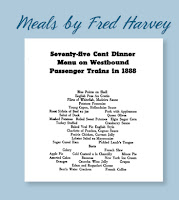Sitting on Summit Avenue, in St. Paul, Minnesota, amidst other Civil War-era mansions, is a stately 10-bedroom mansion.
This well-preserved home was
named after it’s original owner, Chauncey W. Griggs.
Griggs was a Civil War
officer and a grocery tycoon who had this lavish Victorian home built in 1883.
He however only lived in this mansion for 4 years, before he headed west for
more adventure and profits.
Griggs Mansion still retains its beautiful wood-paneled walls and stain glass windows.
The original carriage house still stands in the back.
In the late 1930s, the mansion was donated to an art
school that stayed for 25 years. The school had a beautiful skylight placed
above the top floor.
This art school was the
exception, for most who have owned Griggs Mansion, over the past Century, have
moved out quickly.
This mansion is known to be
St. Paul’s most haunted house—it has several ghosts and a variety of
paranormal activity occurs in the home.
One of the most active ghosts
is a maid who worked in the mansion at the turn of the 20th Century.
She committed suicide by hanging herself on the top floor’s landing after a
failed love affair.
A maid and butler that worked in the mansion first saw her ghost in the early 20th Century.
Her apparition has been seen
in a white mist ever since. Many witnesses have felt her presence—stating they
got an overwhelming sense of doom while standing near the landing.
Another former employee
haunts the library in the home. Charles Wade was the mansion’s obsessive
caretaker and gardener.
 |
| Library door. |
When he died, he was in the middle
of a project in the garden. Some feel he lingers because of this unfinished
business.
In 1964, Mr. Waschke bought
the mansion intending to use it as his home and office. While working at his
desk, in the library, he saw a man with a long face, white hat, and a dark suit, who was glaring at him from the doorway.
As he watched this apparition
faded away.
When he had the home renovated, one window kept opening by itself—he finally had it nailed shut, but the next
morning it was open once more.
Another ghost seen often is
an old man with white hair, who wears a black suit and top hat. This male ghost
has been seen in several different rooms.
In the early 1950s, Dr.
Delmar Kolb joined the art school staff. He moved into a front basement apartment in the mansion. One night he awoke to two cold fingers pressed to his
forehead.
When he turned on the light,
he saw a blue flash that disappeared. Two nights later, he was awakened again.
He saw a man dressed in a black suit and top hat standing at the foot of his
bed.
This figure then turned and
dissolved into a nearby brick wall.
Students, when the home was an art school, often reported, as they drew on easels, they felt something
unseen looking over their shoulders. They speculated that it might be the maid who
committed suicide on the upper floor.
When the art school moved out of
the mansion to their new building, it is said the staff were relieved for they
did not want to deal with unseen ghosts anymore.
One story often told is about
three skeptical journalists, from the St. Paul Pioneer Press, who stayed at the house
one night in 1969, to do research for an article. These three remained on
the top floor near where the unfortunate maid had died, over 50 years before.
By 4:00 a.m., these three men
fled the mansion in terror. They heard heavy footsteps on the stairs
heading toward the upper floor.
One of these men braved the
staircase on his own, at which point he felt a presence near him. All three men
then ran out of the house—through the back entrance.
 |
| Staircase |
Recent owners of the mansion
have discouraged paranormal interest in the home, but they all have left
quickly. Griggs Mansion was put on the market in 2012, but it has not sold.
The price was reduced from
1.8 million to 1.1 million—but it was still on the market this year.
This says a lot because
anyone who owns the home can rent out the basement apartments, that have the
potential to bring in as much as $60,000 in revenue each year. That is if the
tenants are willing to stay.
In 1959, three students moved into one basement apartment. One of the three was awakened to see the head of a child floating above his bed. Other students that have stayed in these apartments claim they were shaken awake.
In 1959, three students moved into one basement apartment. One of the three was awakened to see the head of a child floating above his bed. Other students that have stayed in these apartments claim they were shaken awake.





































